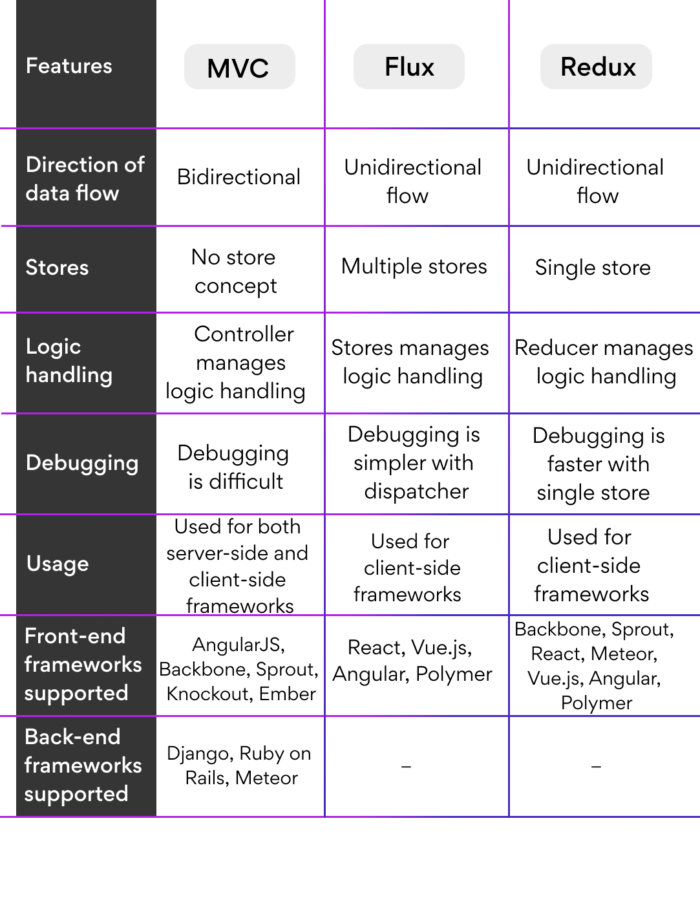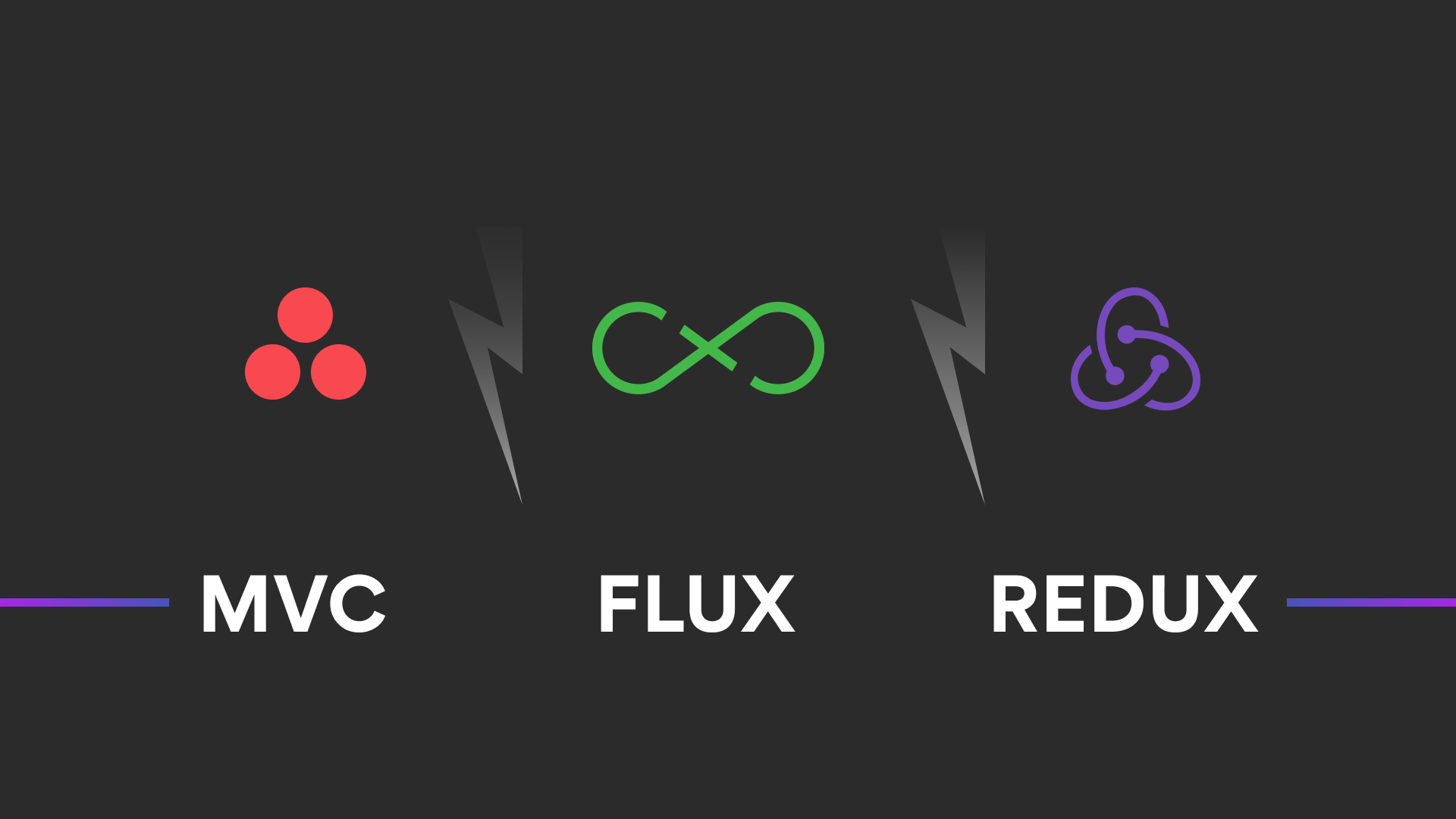MVC vs. Flux vs. Redux: What Should You Pick?
Developers need a good design pattern and architecture to create stunning applications. The MVC architecture is one of the most popular design patterns to date. However, the entry of advanced frameworks like Flux and Redux offers developers different choices.
MVC, Flux, and Redux architecture effectively create scalable and user-friendly applications. These design patterns help developers track the progress of their applications.
Let’s look at the comparison between MVC, Flux, and Redux architecture in detail:
-
MVC vs Flux vs Redux: Which framework offers a better architecture?
MVC architecture has three main components: the model, the view, and the controller. Each component has a specific function. The model is responsible for adding, retrieving, and maintaining data in the database. The view represents data and generates a user interface for the user. The controller enables communication between the model and the view components to ensure that data appears correctly.
Flux is a popular alternative to MVC architecture by META. Flux has four main components: view, action, dispatcher, and store. Users interact with applications in Flux, and data is sent through actions. The dispatcher establishes communication between actions and stores. The store part of Flux defines action handlers for both user interface and domain states. It is also responsible for updating the view layer of applications. The view part of Flux connects with stores to present changes when the stores receive new information.
Redux is a different version of Flux with added components. Instead of the dispatcher used in Flux, Redux architecture has a reducer. Upon receiving objects from the action component of Redux, the reducer uses the previous state and actions to return to the next state. Also, the reducer updates the store with new data. The store sends an update to view after creating a new state. -
Which framework offers better data flow?
In the MVC architecture, the data flows to and from different directions as various systems can change the application state. Different functions in MVC applications can have different controllers and views due to state distribution throughout the application.
On the other hand, in the Flux and Redux architecture, data flow is unidirectional. Developers have better control over data as it is easier to track and maintain. -
Business logic
For any application or software program, business logic involves a set of rules that manage the information exchange between the user interface and database. In the MVC architecture, the controller manages the entire business logic.
In Flux, stores handle business logic as per the data provided by actions. Similarly, in the Redux architecture, the reducer handles business logic after receiving data from the action component. -
Stores
The MVC architecture doesn’t allow any stores as MVC models each object separately. Contrarily, Flux includes multiple stores per application, and Redux has a single store per application.
Flux creates multiple stores to manage different components of the application. To make any change in the application, one has to request the dispatcher to submit the previous state for a return value.
In the Redux architecture, there is only a single store that can store data for different components. Developers can specify a reducer that manages all the data in a single place efficiently. -
Debugging
Applications with MVC architecture are difficult to debug due to the bidirectional flow of data. Developers need to debug the view and model separately.
Flux enables fast debugging with the help of a dispatcher. There are no cascading updates, and a predictable state makes it easy to track the original cause.
Debugging in the Redux architecture is also very simple. All the components are in a single store. They have a single object tree reflecting all the changes done previously. -
Usage
The MVC architecture facilitates the development of both client-side and server-side frameworks. It supports front-end frameworks like AngularJS, Backbone JS, and back-end frameworks like Django, Ruby on rails, etc. Flux and Redux architecture enable the development of front-end applications. Flux and Redux make it easier to handle issues of the application state on the client side. Also, Redux offers additional features like code organization templates, data consistency, and data sharing.
Also, read: 8 Front-End Tools for Web Development

Comparison between Flux. Redux and MVC architecture
Summary
Design patterns and architecture are critical to the success and usability of applications. Developers choosing between Flux, Redux, and MVC architecture must consider the strengths and weaknesses of these design patterns before making a decision. They must also consider whether the architecture will support the technologies and paradigms they use.
Are you a skilled software developer looking for remote jobs? Try Turing. Turing can help you find long-term, high-growth, remote US jobs right from the comfort of your home. Visit our Jobs page to know more!
Join a network of the world's best developers and get long-term remote software jobs with better compensation and career growth.











